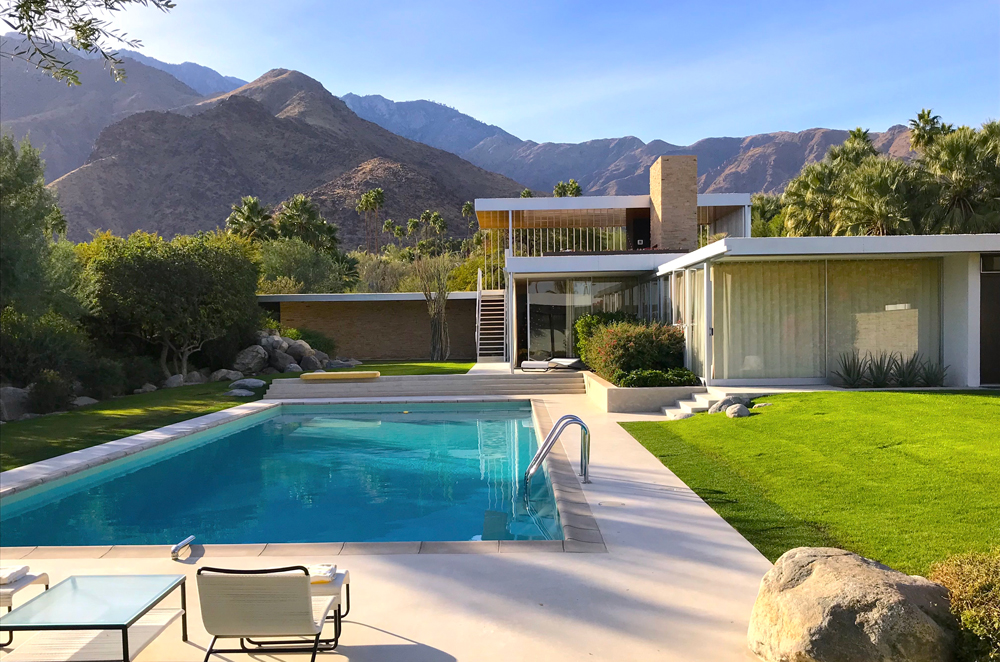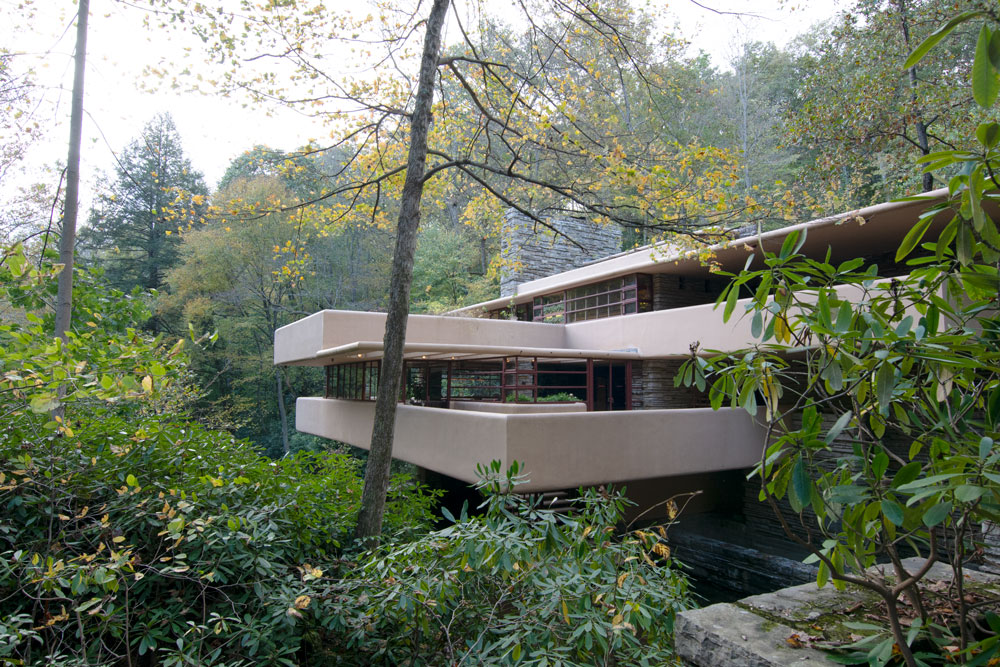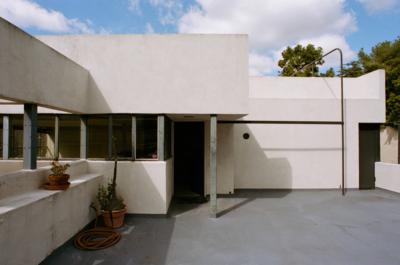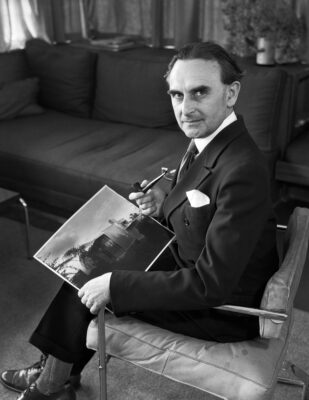
Kaufmann Desert House
It is impossible to think about Southern Californian desert modernism without conjuring up a vision of the Kaufmann Desert House designed by Richard Neutra in 1946. From the moment the Palm Springs ‘winter’ home was completed for department store magnate Edgar J Kaufmann, and photographed by Julius Shulman, it gained international recognition. This was a free-flowing, open plan, principally one-storey home, with the addition of the gloriette – Neutra’s name for the one-raised area affording the viewer the opportunity to survey the whole scene – house, pool and stark landscape beyond. Using concrete, steel, glass and Utah sandstone with a landscaped surround featuring desert plants and boulders, Neutra brought everything together to create a family home in the harshest of conditions (average summer temperatures 94 degrees) whilst entirely blending in with the desert backdrop of the peaks of Mount Jacinto and Coachella Valley.
It’s curious to think that two men who made such a profound mark on our understanding of desert modernism were Swiss-German-born Albert Frey and Austrian-born Neutra. Both had been schooled in European modernism and had worked on landmark projects with leading figures., They found their way to the West Coast of America (for Neutra with some notable pitstops along the way) and shaped American understanding of International style. For Albert Frey, Palm Springs was his life’s work. Neutra was constantly being drawn back to Los Angeles. When the two men came together, Palm Springs’ Limelight News** wrote a feature article, “Frey Weekend Host”, about the visit from “Mr. & Mrs. Richard J. Neutra of Los Angeles.” It noted “Mr. Neutra is the well-known architect so famous for his ultra-modern houses. He designed the Grace Lewis Miller modernistic house here a few years ago, which since has appeared in many architect magazines as an outstanding example of modern design.” The house in question was Neutra’s 1937, Mensendieck House. A matter of three years later he would complete the Kaufman House.
“the inherent and inseparable relationship between man and nature”
Neutra coined the expression biorealism, to convey his belief that underpinning everything was “the inherent and inseparable relationship between man and nature”, the desert home and in his much earlier Los Angeles Lovell Health House made real his philosophical approach. These are issues we think about constantly now, to say Neutra was ahead of his time was an understatement.
If the house looks familiar, it’s not by chance. Slim Aaron made it an icon of cool in his photo of Lita Baron, Helen Dzo Dzo and Nelda Linsk partaking in some ‘Poolside Gossip’ in 1970. This leads neatly to the story* shared by architectural historian and author of Richard Neutra and the Search for Modern Architecture, Thomas S. Hines, that Neutra built the pool area first. It was not uncommon to find him “critiquing the rest of the construction while splashing and floating in the water.”
And the Kaufmann’s other house where architecture and nature were fused together? Fallingwater, designed by Frank Lloyd Wright in the 1930s
Kaufmann Desert House built 1946–1947
Restored 1993–1998
Palm Springs City Council Class 1 Historic Site
Image: Pmeulbroek CC BY SA 4.0
*Ref: Architectural Review
** Desertsun.com







